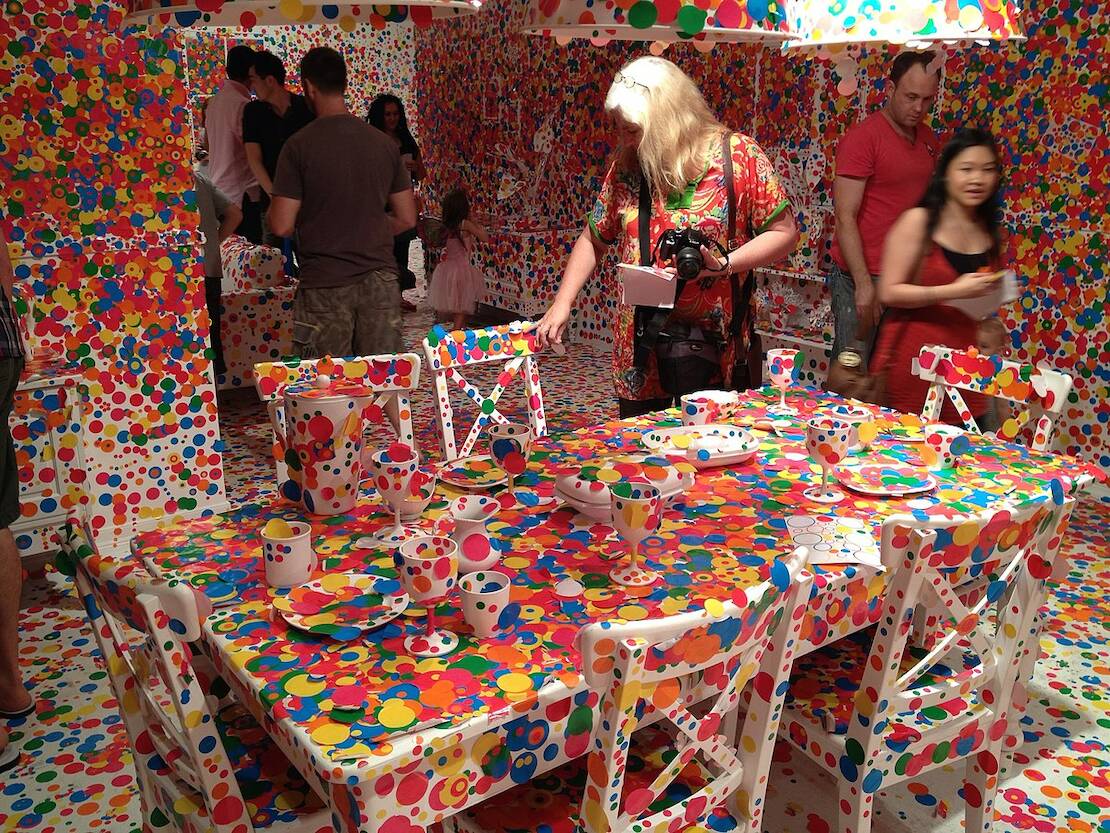
"I followed the thread of art and somehow discovered a path that would allow me to live.

"I fight pain, anxiety, and fear every day, and the only method I have found that relieved my illness is to keep creating art," she told an interviewer in 2012. A vital part of New York’s avant-garde art scene from the late 1950s to the early 1970s, Yayoi Kusama developed a distinctive style utilizing approaches associated with Abstract Expressionism, Minimalism, Pop art, Feminist art, and Institutional Critiquebut she always defined herself in her own terms. She says that art has become her way to express her mental problems. Kusama has been open about her mental health and has resided since the 1970s in a mental health facility which she leaves daily to walk to her nearby studio to work. Here, he finds that her innovative artworks are inextricably bound. Kusama has continued to create art in various museums around the world, from the 1950s through the 2020s. Nilesh Patel delves into the life and work of influential Japanese artist Yayoi Kusama. She experienced a period in the 70s during which her work was largely forgotten, but a revival of interest in the 1980's brought her art back into public view.
#OBLITERATION ROOM BY YAYOI KUSAMA SERIES#
Embracing the rise of the hippie counterculture of the late 1960s, she came to public attention when she organized a series of happenings in which naked participants were painted with brightly coloured polka dots. She moved to New York City in 1958 and was a part of the New York avant-garde scene throughout the 1960s, especially in the pop-art movement. The Polka Dot Princess Yayoi Kusama is one of the most exciting and prolific contemporary artist. She was inspired by American Abstract impressionism. Yayoi Kusama, Dots Obsession, Infinity mirrored Room, 1998. In Helsinki, the room will be set up in the HAM Corner, which is on the. What happens then is self-obliteration, in which you completely wipe out your self on your own. Yayoi Kusamas art project Obliteration Room has been travelling around the world. Not only that, you also cover the background with them. This exhibition focuses on the psychedelic aspects of Yayoi Kusama’s work and presents rich variations of her creations from different periods. Kusama was raised in Matsumoto, and trained at the Kyoto City University of Arts for a year in a traditional Japanese painting style called nihonga. The Obliteration Room by Yayoi Kusama: The Pavilion Tokyo 2021 Imagine you cover your entire body with polka dots. Her work influenced that of her contemporaries, including Andy Warhol and Claes Oldenburg. Artist Yayoi Kusama Japanese, born 1929 Culture Japanese Titles Aftermath of Obliteration of Eternity Date 2009 Medium Wood, metal, glass mirrors, plastic, acrylic paint, and LED, edition 3/3 Dimensions Overall: 163 1/2 × 163 1/2 × 113 1/4 in. She has been acknowledged as one of the most important living artists to come out of Japan, the world's top-selling female artist, and the world's most successful living artist. Her work is based in conceptual art and shows some attributes of feminism, minimalism, surrealism, Art Brut, pop art, and abstract expressionism, and is infused with autobiographical, psychological, and sexual content. In 2017, She held a large retrospective exhibition “My Eternal Soul” (The National Art Center, Tokyo) and in the same year, the Yayoi Kusama Museum opened in Shinjuku, Tokyo.Yayoi Kusama ( 草間 彌生, Kusama Yayoi, born 22 March 1929) is a Japanese contemporary artist who works primarily in sculpture and installation, and is also active in painting, performance, video art, fashion, poetry, fiction, and other arts. The Obliteration Room (2002 - present) that has more than what its looks convey. She is one of the most important Japanese artists, continuing to work energetically in and outside Japan today. Her representative works include Infinity Net, Dots Obsession, Pumpkin, and My Eternal Soul. In addition to her artistic activities, she has also published a number of novels and poems.

In 1957, she moved to United States by herself and discovered an artistic philosophy of self-obliteration through obsessive repetition and multiplication of a single motif, and established herself as an avantgarde artist by developing a diverse range of works including net paintings, soft sculptures, environmental sculptures using mirrors and electric lights, and happenings.

She has experienced visions and auditory hallucinations from an early age, and began to draw polka dots and net patterns as motifs.


 0 kommentar(er)
0 kommentar(er)
